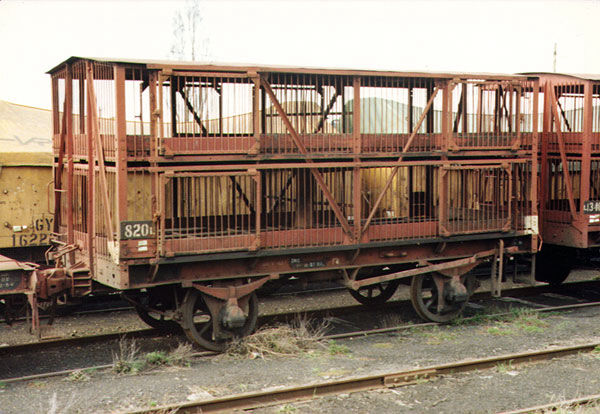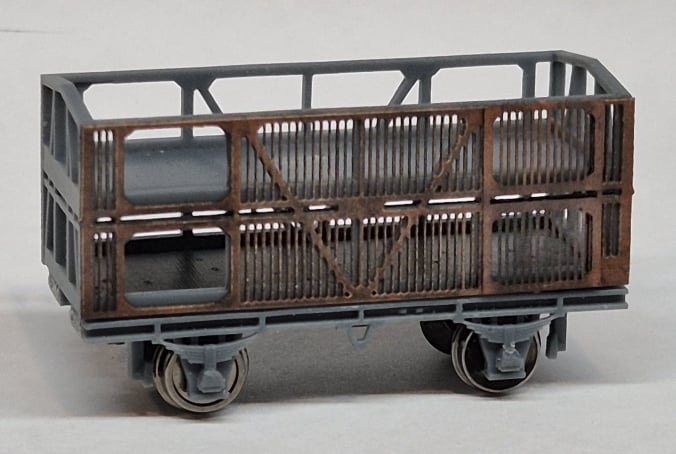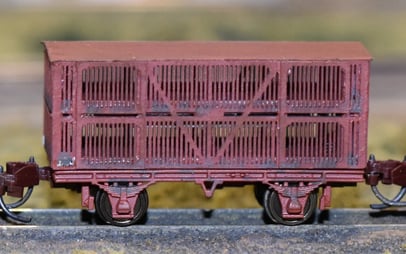
Part no. 1014
Until now, this has been one of the most challenging wagons to scratchbuild in N scale—hence their near-total absence from layouts. But that changes here.
Thanks to advanced laser-cutting and composite sandwich construction, these iconic wagons can now be built with minimal tools and effort. The kit includes 3D-printed parts, laser-cut bars, paper numberboards, and 3D-printed underframe with metal or plastic wheels.

Note the fine detail
The only known hand-built version of this wagon took over 100 hours to complete — with this kit, you can build one in just an hour. And yes, all the bars are included! The build allows sheep to be added and weight under the top floor.
The photo above shows a combination of 3D-printed and laser-cut parts. The kit includes accurate 3D-printed underframes, designed to suit either metal wheels or Micro-Trains wheels.

History
Construction began in 1896 and continued through to 1953, with a total of 1,405 wagons built to two distinct designs. This kit models the more common version—numbers 1 to 1252—featuring the characteristic gable roof. The second, less common design had a curved roof, similar to the ‘M’ van cattle wagons.
Primarily used for transporting sheep, these wagons were also employed for moving pigs when required. They served across the Victorian Railways network until livestock train operations ended in October 1986.